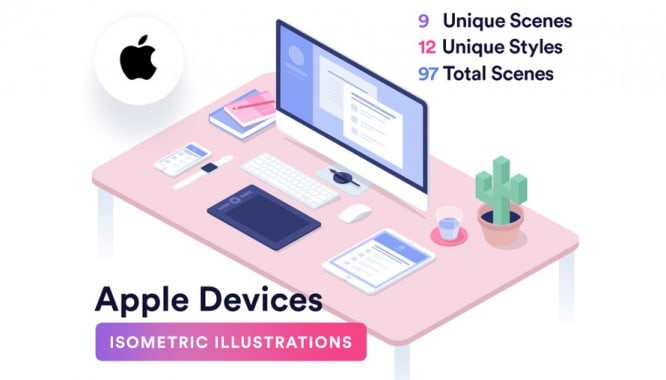4 barriers that prevent a designer from reaching the next level
4 barriers that prevent a designer from reaching the next level
In 2017, I spent a lot of time with designers, attending events, speaking to small audiences, and responding to comments and numerous blog questions.
In addition, I managed to get to know closely the leaders of several large design teams, which helped me find an answer to a question that tormented me for a very long time: what separates good designers from successful ones.
After analyzing the success and failure stories of modern designers, I have identified 4 obstacles that prevent a designer from reaching a new, including international, level.

1. Lack of significant projects
No one is interested in the education of a designer, because his level can only be judged by the quality of work. The portfolio is what the customer is interested in. Many people have nothing to fill Dribbble / Behance with, and there may be several reasons for this: projects under an NDA, work on a “raw” product, or the lack of interesting tasks worthy of publication. The way out of this situation has long been familiar to everyone, but not every designer is ready to decide on it.
Side-project is the salvation of a designer stuck in a routine. The examples of hundreds of designers around the world prove this.
In the article “Reloading the designer. How to say goodbye to routine and reach a new level ”I have already given examples of our compatriots who, having implemented a side-project, moved to the world capitals of New York, London and Amsterdam. This method works flawlessly. The only question is whether you are ready to invest your energy and time in this.
Side-project usually takes from several weeks to six months. Side-project is not a shot on Dribbble, but a full-fledged presentation from idea to solution implementation.
The packaged project attracts customers and employers from all over the world, as it is very difficult to find good designers. Even one of the most popular design studios in the Fantasy world has a problem finding new staff. Make a name for yourself to the whole world and give the best internet companies a chance to find you.
Examples of well-packaged projects:
Rethink Digital Newspapper New York Times by Artyom Troiny;
“Functional and visual redesign of Google News” by Georgy Kvasnikov.
2. Introversion and closeness
The first book I read in 2018 was the best one about success of all time (and I’ve read over 200 books). This is the autobiography of Arnold Schwarzenegger, a former bodybuilder, businessman, actor and governor of California. 4 areas and success everywhere. What is his secret?
Arnold has placed a lot of emphasis on building relationships and promoting his product from the very beginning of his career, whether it be in fitness, a book or a film. He always believed that after the filming process was completed, only half of the work was done. Apparently, thanks to this, he was able to double his fee after each premiere.
“Many people consider themselves superior to promoting their creativity in the market. Whatever you do, you need to be able to sell your product ”– Arnold Schwarzenegger.
Design is your product. The best designers are successful not because they skillfully move rectangles (there is no way without it), but because they have the courage to tell the whole world about it.
Similar thoughts are expressed by a successful businessman and the current president of the United States:
“Become a trademark and trumpet the whole world. You must learn to speak out loudly and announce your accomplishments. Nobody else will do it for you ”– Donald Trump.
Today anyone can trumpet about themselves all over the world using Dribbble, Behance, Twitter, Medium, Facebook and even Instagram. A person who does not use technology will soon find himself behind the board of progress.
3. Noise
Despite all the benefits of social media platforms, they can do a lot of harm. As any novice specialist, looking through the best projects on Dribbble, may not correctly understand the essence of a designer’s work.
What do you think is closer to design for a beginner: a Behance case or a series of articles “UX Strategy in Practice”? The answer is obvious, despite the fact that Yuri Vetrov’s articles cover the entire process of working on the product, while the case is only a visual shell.
Undoubtedly, both are important, but when faced with a large amount of information, not only beginners, but also established specialists begin to get confused.
Design trends, rules, systems are just tinsel designed to help a designer shift their focus. You shouldn’t take it seriously, let alone blindly use it.
Your current project is unique, you are unique, and you both need a solution that is relevant to your situation. And it is better to look for it not outside, but inside yourself and your product.
4. Laziness
The most important thing that separates people from a breakthrough is laziness.
There is no one-size-fits-all way to achieve success. You can work long, stupid, and ineffective, but still be successful. It doesn’t matter where and how you write down tasks (or keep them in your head), it doesn’t matter what time you wake up and what you do before breakfast. All that matters is that you are moving forward.
Quick success stories are dizzy and make you think you’re doing something wrong. Everyone has their own path, their own conditions, disadvantages and advantages. I have read many books, talked to dozens of successful people and I can confidently say that there are no average rules of success. There is only you and your desire to do something worthwhile.
Source: designpub.ru
…

